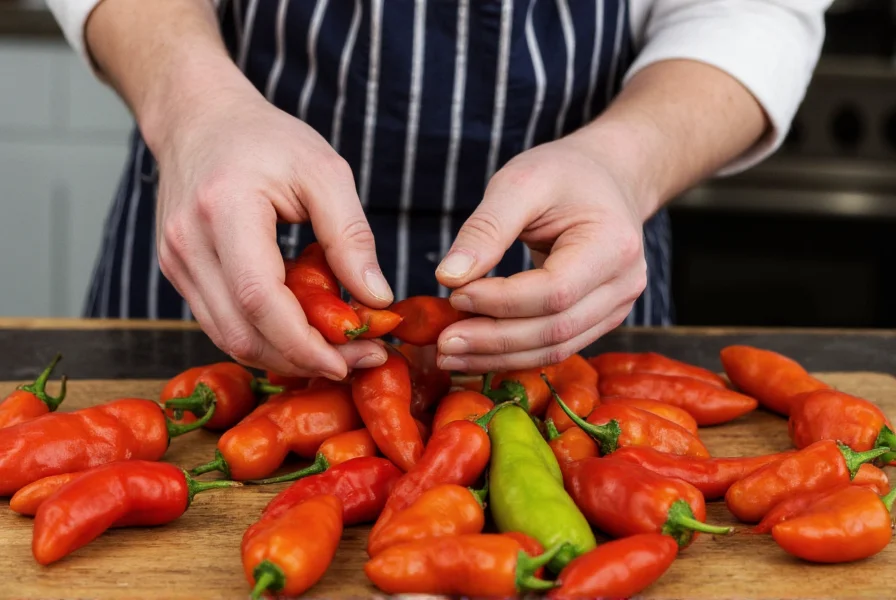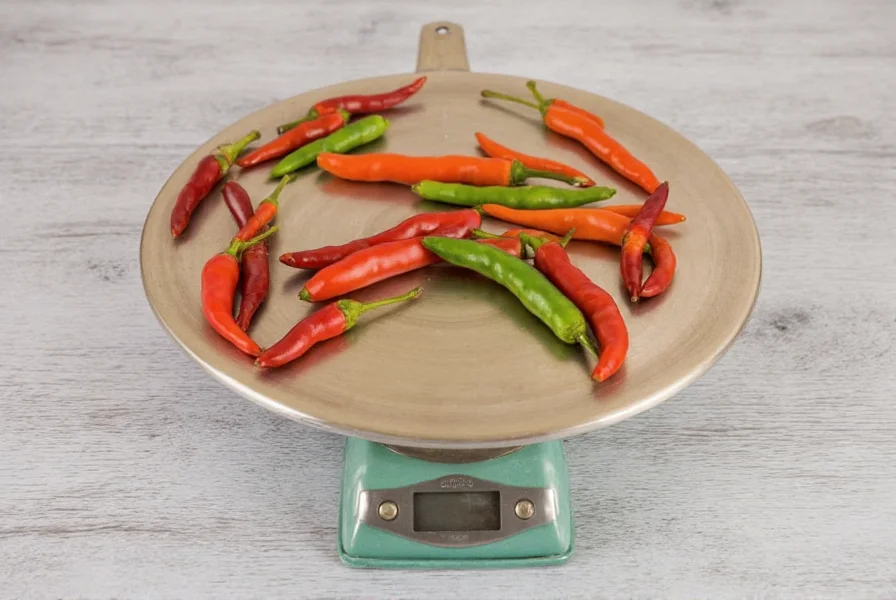Understanding pepper spiciness is essential for both culinary enthusiasts and professional chefs. The Scoville scale provides a standardized measurement system that helps predict how a pepper will impact your palate and dishes. This comprehensive guide explores the science behind pepper heat, practical applications in cooking, and how to navigate the wide spectrum of chili pepper spiciness.
The Science Behind Pepper Spiciness
Pepper heat comes from capsaicinoids, chemical compounds concentrated primarily in the placenta (the white ribs) of chili peppers. When you eat spicy food, these compounds bind to pain receptors in your mouth, triggering the familiar burning sensation. The concentration of capsaicin directly correlates with a pepper's position on the pepper spice scale.
Originally, Scoville measured heat through human taste panels—a method called the Scoville Organoleptic Test. Panelists would dilute pepper extract in sugar water until the heat became undetectable. The degree of dilution determined the Scoville rating. A 5,000 SHU pepper required dilution 5,000 times before the heat disappeared.
| Pepper Variety | Scoville Heat Units (SHU) | Heat Level Description |
|---|---|---|
| Bell Pepper | 0 SHU | No heat |
| Jalapeño | 2,500-8,000 SHU | Moderate heat |
| Habanero | 100,000-350,000 SHU | Very hot |
| Ghost Pepper (Bhut Jolokia) | 800,000-1,041,427 SHU | Extremely hot |
| Carolina Reaper | 1,400,000-2,200,000 SHU | Superhot |
Modern Measurement Techniques
Today, high-performance liquid chromatography (HPLC) has replaced the subjective human testing method. This scientific approach precisely measures capsaicinoid concentration, then converts the results to Scoville Heat Units using a mathematical formula. The American Spice Trade Association (ASTA) also uses a pungency measurement system that's more technical but correlates with Scoville ratings.
Understanding the difference between Scoville Organoleptic Units and ASTA Pungency Units is valuable when comparing pepper heat measurements. While both systems measure the same compounds, HPLC provides more consistent, objective results unaffected by human taste variation.
Practical Applications in Cooking
Knowing where peppers fall on the pepper spice scale helps you create balanced dishes. When substituting peppers in recipes, consider these practical guidelines:
- Mild peppers (0-5,000 SHU): Bell peppers, pimientos - ideal for stuffed peppers, salads, and dishes where you want pepper flavor without heat
- Medium heat (5,000-30,000 SHU): Jalapeños, serranos - perfect for salsas, guacamole, and adding noticeable but manageable heat
- Hot peppers (30,000-100,000 SHU): Cayenne, tabasco - excellent for hot sauces and dishes requiring significant heat
- Very hot peppers (100,000-500,000 SHU): Habaneros, Scotch bonnets - use sparingly in Caribbean and Central American cuisine
- Superhot peppers (500,000+ SHU): Ghost peppers, Carolina Reapers - handle with extreme caution; best for specialized hot sauces
Safety Considerations with Hot Peppers
Working with extremely hot peppers requires precautions. Always wear gloves when handling superhot varieties, and avoid touching your face. If you experience burning sensations, dairy products like milk or yogurt provide relief better than water, as capsaicin is fat-soluble.
Remember that heat perception varies among individuals. Factors like genetics, previous exposure to spicy foods, and even mood can affect how you experience pepper spiciness. This explains why some people find jalapeños extremely hot while others consider them mild.

Common Misconceptions About Pepper Heat
Several myths persist about measuring and experiencing pepper spiciness:
- Myth: The seeds make peppers hot
Fact: Capsaicin concentrates in the placenta (white ribs), not the seeds. Seeds may become spicy through contact with the ribs. - Myth: Color indicates heat level
Fact: Ripeness affects flavor more than heat. Some green peppers can be hotter than their red counterparts. - Myth: All peppers of the same variety have identical heat
Fact: Growing conditions significantly impact heat levels—same variety peppers can vary by 50% or more in SHU.
Using the Pepper Spice Scale Effectively
When selecting peppers for your recipes, consider these practical tips:
- Start with milder peppers and gradually work your way up the pepper spice scale
- Remove seeds and white ribs to reduce heat significantly
- Balance spicy elements with cooling ingredients like dairy, citrus, or sugar
- Understand that cooking can concentrate or mellow heat depending on the method
- Consider regional variations—same pepper names may refer to different varieties worldwide
Mastering the pepper spice scale transforms your cooking experience, allowing you to create dishes with precisely calibrated heat levels that enhance rather than overwhelm your culinary creations.
What is the highest possible Scoville rating?
The theoretical maximum Scoville rating for pure capsaicin is approximately 16 million SHU. The hottest naturally occurring peppers, like the Carolina Reaper, typically range between 1.4-2.2 million SHU, though individual specimens have tested higher.
How can I reduce the heat of a dish that's too spicy?
To reduce spiciness in a dish, add dairy products (milk, yogurt, sour cream), acidic ingredients (lime juice, vinegar), or sweet elements (sugar, honey). Increasing the recipe's volume by adding more non-spicy ingredients also helps dilute the heat. Remember that cooling effects are temporary as capsaicin isn't destroyed by cooking.
Why do some jalapeños taste much hotter than others?
Jalapeño heat varies significantly due to growing conditions. Stress factors like water scarcity, temperature fluctuations, and soil composition can increase capsaicin production. Two jalapeños from the same plant can differ by 50% or more in Scoville Heat Units, explaining why some taste mild while others feel extremely hot.
Is there a relationship between pepper size and heat level?
No direct correlation exists between pepper size and heat level. Smaller peppers often concentrate more flavor, but heat depends on capsaicin content, not size. Some of the world's hottest peppers (like the tiny pequin) are small, while others (like the large habanero) are medium-sized. Heat varies more by variety and growing conditions than physical dimensions.











 浙公网安备
33010002000092号
浙公网安备
33010002000092号 浙B2-20120091-4
浙B2-20120091-4